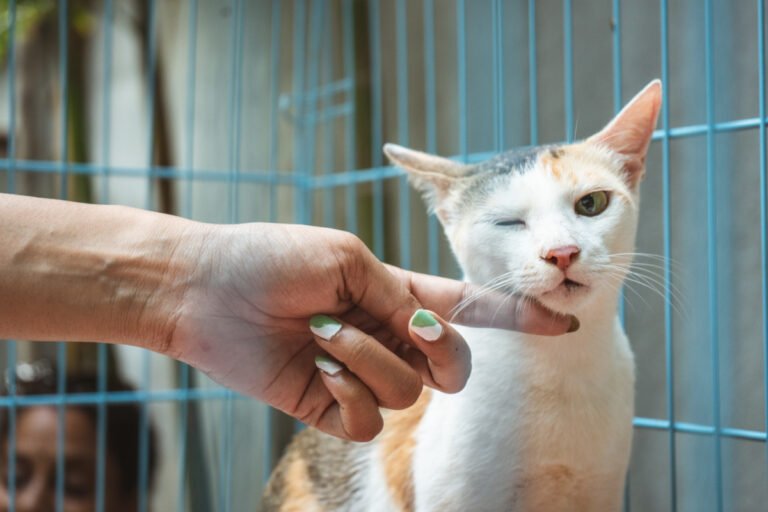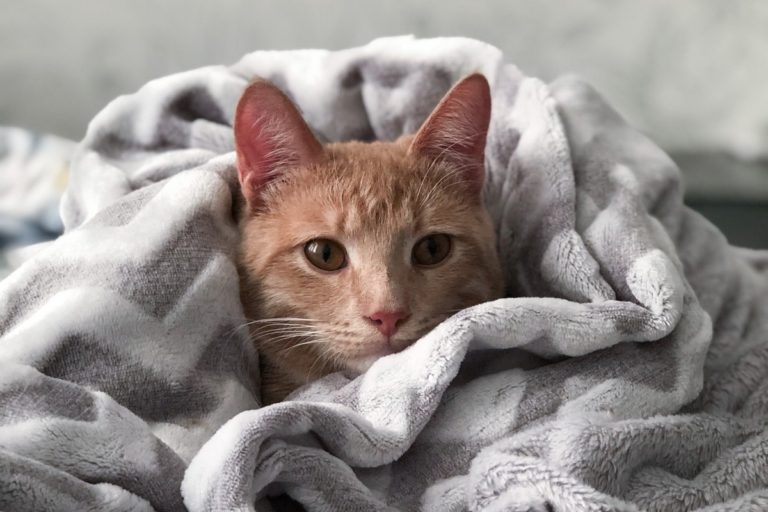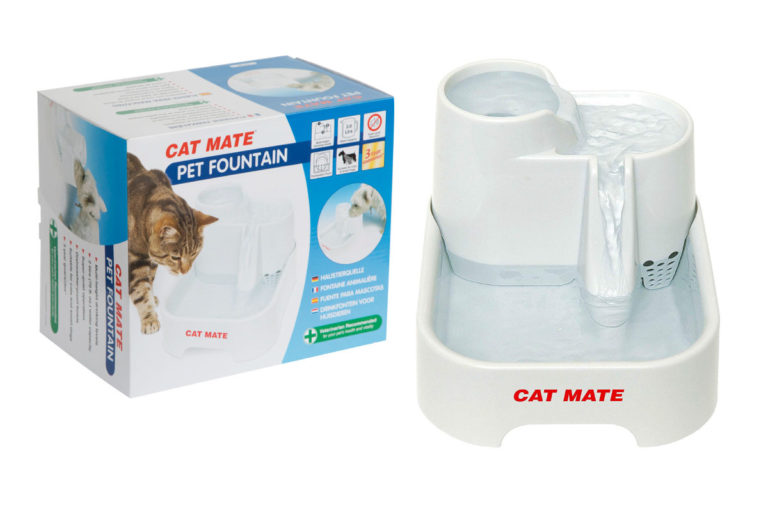Is your cat family expanding? Time to add another litter box! Or two? Use our tips to determine how many litter boxes for 3 cats you need, and how to peacefully manage all of them.
DISCLAIMER: This post may contain affiliate links. If you click one of these links and decide to make a purchase, we may receive a small commission. This comes at no extra cost to you and helps to keep the site alive and up to date. If you want more information, please review our Privacy Policy. Thank you for your support!
How Many Litter Boxes Should You Have For 3 Cats?
The litter box area, or areas, can be a source of problems in a multi-cat household. Managing all those personalities and their bathroom preferences can be quite a handful. You can take a huge leap in the right direction if you at least put out enough litter boxes to accommodate your felines.
But how many litter boxes is enough for 3 cats? The short answer: 4.
Overall, you want to give your cats the opportunity to claim one of the litter boxes as their own, if that’s their inclination, and have an extra communal box.
Put one litter box on each floor of your residence that your cats can access, and space any remaining litter boxes out over the rest of the house. You might be tempted to put all of the litter boxes in the same room, creating one big litter box area, but I generally recommend against it.
For one, the combined stank of 4 litter boxes will make that room practically inhabitable to all residents, human or cat. Second, forcing your cats to all do their business in the same place can greatly enhance any underlying tensions and will likely result in more poop on the floor than in the litter box.
Litter Box Politics
Successful litter box management hinges on a few things. Let’s look at the 3 main things that come into play for your cats.
Territory
Cats are highly focused on scent and, as you can imagine, this is an important aspect of the litter box area. As they use the litter box, it starts to smell like them and becomes part of their territory.
If your cats get along just fine, they might not mind having another cat’s smell around them when they poop. They consider each other family and are used to their scents mixing. In that case, you might change how many litter boxes you put out for your 3 cats and go with fewer.
However, if your cats just aren’t that into each other, or you’re introducing a new cat into the home, you have to be more careful. The smell of an unfamiliar or unliked cat can set your kitty off in unpredictable ways. This is why it is so important how many litter boxes you have and how you space them out.
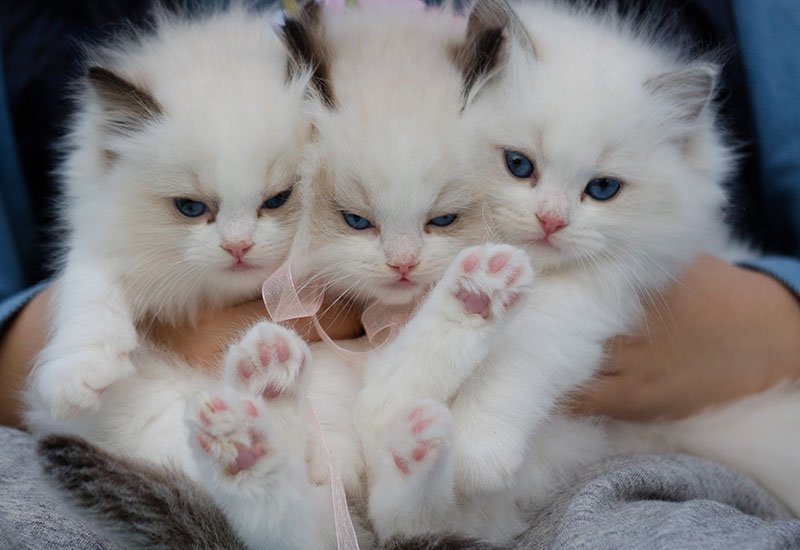
Comfort
Just like us, cats need to feel comfortable to do their business. That means they should have enough room to fully fit inside the litter box and still have some room left to wiggle around. If your litter box is too small, your cat might inadvertently leave its butt hanging over the side and defecate on the floor.
At the same time you don’t want the litter box to be too large. Cats like places that are snug enough for them, without leaving room for a predator to get in there.
Health
Another important thing to consider is the health of your cats. You want your litter boxes to accommodate them, no matter what stage of life they are in. Young cats usually can get in and out of any tight spot without a problem. Kittens aren’t that mobile yet, so they need a bit of help, or a special litter box for kittens.
Older cats can start to lose mobility because of wear and tear on their joints and muscles. You need to give them an easier option or they may start to have issues around the litter box.
On top of that, cleanliness is key to ensure the overall well-being of your felines. If you go too long without cleaning the litter box, they might start to rebel. No matter how many litter boxes you put out. And it ain’t gonna be pretty.
Remove any feces and soiled litter as soon as you notice it and give each litter box a good scrub about once a week. Use a non-tracking cat litter that works in small spaces. You can rest assured that your cats won’t have to crawl into a bacteria-riddled space, and then onto your lap…
Diversify Your Litter Box Selection
Different kitties have different needs. Add some variation to your litter box choices to cater to all of them. This is what you need to keep in mind.
Size
We’ve touched upon your cats’ preference for a snug space. But what exactly do we mean by that?
In general, you should aim for a litter box about 1.5 times the size of your cat.
If your kitty is of a larger breed, like a Maine Coon, a Ragdoll, or even a medium to large Bengal cat, you need a BIG litter pan. These can be hard to find. Check out our review of the Best Litter Boxes For Large Male Cats to help you on the way.
Shape
Regarding shape, there are two main options to choose from: covered and uncovered, or open, litter boxes. They each have their advantages and disadvantages.
An open litter pan is perfect for bigger cats and kitties that are a little anxious. They won’t feel claustrophobic and can see any threat coming. On the downside, the urine and feces will be staring you right in the eye, and nose… Although, that might be just the encouragement you need to keep it clean.
A covered litter box is nice for messy felines and cats that like their privacy. Everything will stay nicely hidden inside the litter box, instead of being tracked all over the house. Covered litter boxes also tend to be better at limiting the smell emanating from your litter box area. In most cases, however, they trap it inside for your cat to enjoy. So a covered litter box is still no excuse to skip on the cleaning. Sorry!

Entrance
Your senior cats, and also the big-boned ones, need to be able to get in and out of the litter box with ease. It hurts them to put too much pressure on their joints, so they are not keen on stepping over a high rim. If they can even lift their legs that high.
Give them a litter box with a low front entry. This allows them to just stroll right in. Naturally, you won’t be able to use as much litter in this litter box, because it will spill out as soon as the first cat gets in. Use a light layer of litter and be sure to give the pan an extra cleaning now and then. A setup like this also works perfectly for kittens.
On the other end of the spectrum are young cats that have a habit of spraying. For those cats you actually want a litter box with the highest rim possible, or even a top-entry covered litter box. Unless you like cleaning your walls and floor every day.
What About The Litter?
Your choice of cat litter can also have an effect on your cats’ experience, and your litter box options.
Clumping vs Non-Clumping
Clumping litters are generally less messy to clean up than non-clumping litters. As soon as your cat pees on it the pellets start clumping together in a ball that you can then easily scoop out.
Non-clumping litters are less scoopable. Your best bet is to pair them with a sifting litter box. A sifting litter box has a double-layered bottom pan. The top layer has holes where the soiled bits can fall through. The bottom layer catches all the mess. All that’s left for you to do is shake the pan and throw out whatever falls through.
Organic vs Inorganic
Clumping litters are usually made from clay. The good ones are, anyway. Clay has the unfortunate property of being very dusty. Large clouds tend to appear as you pour it into the litter box. Not ideal for people with allergies or respiratory problems. And, clay litters are not biodegradable.
Environmentally conscious cat guardians may want to go for a recyclable, organic cat litter. You have a range of materials to choose from: paper, wood, grass, corn… These litters tend to be non-clumping, or try to clump, but fail.
One thing to consider before choosing an organic cat litter is whether your cats have allergies. If your cat is allergic to corn, for instance, it’s not a good idea to give them a corn-based litter. If you start to see them scratching and biting themselves, especially around their paws, take the litter out of your house and bring your cat to the vet.
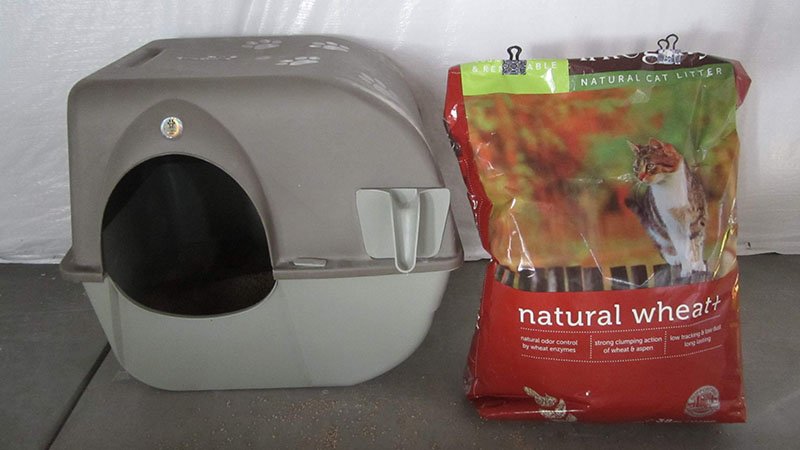
Litter Tracking
A common annoyance among cat owners is litter tracking everywhere. You find it in the kitchen, in the bathroom, on your sofa and in your bed. It sticks to your cats’ paws, to your shoes, to everything! And the more cats you have, the worse it gets.
How do you prevent cat litter tracking?
Let’s be real: you’re not going to prevent tracking completely. It’s just the nature of the game.
You can, however, limit it a great deal with the right litter box configuration. Clumping litters tend to track less than non-clumping litters. High edges and covers help a lot, if your cats’ health allows you to go this route.
In all cases, a decent cat litter mat can increase your chances of keeping litter in the litter box area. They clean your cats’ paws as they leave the litter box and trap the pellets. This can save you a lot of vacuuming.
Final Thoughts
As you start introducing more cats into your family, it is a good idea to revisit your litter box setup every once in a while. Do you have enough litter boxes? Do they cater to all of your cats’ needs? Is everyone still happy?
No matter how many litter boxes for 3 cats you get, litter box problems may still occur. Use our guide to help you spot possible issues and nip them in the bud. Before they escalate into a giant mess that you will undoubtedly have to clean up.







